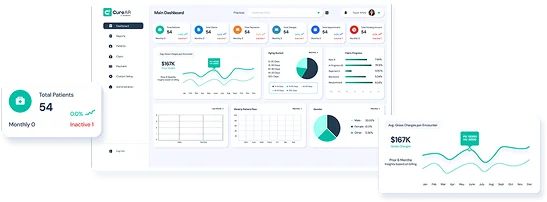Verifying patient insurance is a crucial step for any healthcare provider. It doesn’t matter if your practice is a small clinic or a large medical center. Knowing that coverage is active and sufficient protects your workflow, prevents claim denials, and keeps your practice financially healthy.
Healthcare teams can make insurance verification easier, prevent mistakes, and focus on delivering excellent patient care through expert insurance eligibility verification, RCM services, and virtual medical assistants.
Let’s take a closer look at how to verify insurance coverage effectively and ensure your practice runs smoothly.
Why Insurance Verification Matters
Insurance verification is more than simply a formality. It is the foundation of any healthcare practice’s operational and financial stability. Patients are aware of their obligations, billing errors are decreased, and denied claims are less frequent when coverage is confirmed in advance.
Your employees and patients may become frustrated if you don’t confirm coverage. Suppose you have a procedure done and then discover that the service is not covered. It not only destroys workflow, but it also hurts trust and might cause payment delays. Your practice can run effectively and with confidence if you use expert insurance eligibility verification to make sure you know exactly what is covered.
Insurance Essentials Every Practice Should Know
It is important to understand the types of insurance plans and the key terms associated with them before verifying coverage.
Types of Insurance Plans
- PPO, HMO, POS, and EPO plans
- Medicare and Medicaid
Each type of plan has its own rules about coverage, referrals, and network limitations. Knowing the type of plan your patient has is the first step to effective verification.
Key Insurance Terms
- Deductible: The amount a patient pays before insurance starts covering costs.
- Copay: A fixed payment for a specific service.
- Coinsurance: A percentage of the cost the patient is responsible for.
- Out-of-pocket maximum: The maximum amount a patient will pay in a year.
Understanding these terms ensures that your staff can clearly communicate coverage details to patients and prevent billing surprises.
Gathering Patient Insurance Information
Collecting accurate patient information is the foundation of successful verification. This includes:
- Insurance card details
- Patient demographics such as full name, date of birth, and address
- Primary and secondary insurance information, if applicable
Having complete and accurate information makes the verification process smoother and reduces the chances of errors or delays. Many practices rely on Virtual Medical Assistants to streamline this process. These assistants can gather and organize patient data, making it easy for your staff to focus on care rather than paperwork.
Using Verification Tools
Online Portals and Electronic Systems
Most insurance companies offer online portals or EDI systems that allow real-time verification of coverage. These platforms can save significant time and increase accuracy compared to manual verification methods.
Phone Verification
Sometimes, direct phone verification is necessary, especially if a patient’s plan is complex or there are discrepancies. When calling, have all patient details ready and confirm:
- Coverage eligibility
- Covered services and exclusions
- Prior authorization requirements
Combining online verification with phone calls ensures nothing is missed and provides a backup if the electronic system is unclear.
Step-by-Step Process for Verifying Coverage
Here is a quick and easy method for efficiently confirming insurance coverage:
- Get the patient’s full insurance details and verify their eligibility over the phone or on the insurer’s website.
- Verify the previous authorization requirements, exclusions, and covered services.
- Enter the verification information in the practice management system or the patient’s file.
- Give the patient a thorough explanation of the coverage information.
This methodical strategy guarantees that your practice is ready for every patient contact, lowers errors, and increases efficiency. Many of these procedures can be automated using RCM Services, freeing up staff members to concentrate on patient care while preserving accuracy.
Common Challenges and How to Overcome Them
Insurance verification is not always straightforward. Some common challenges include:
- Outdated or incorrect insurance information
- Coverage discrepancies between the insurer and the patient’s card
- Prior authorization or referral requirements
The finest way to address this issue is through consistent verification protocols, staff training, and the use of technology. Expert insurance eligibility verification can also assist by providing immediate accuracy and reducing errors that lead to claim denials.
Communicating Coverage Information to Patients
Keeping patients informed about their costs is essential. Explain their copays, coinsurance, and deductibles in a simple and understandable way. Transparency builds trust and prevents surprises on the billing statement.
Virtual Medical Assistants can be used to send reminders, automated explanations, and coverage summaries, ensuring patients are fully informed before their visit.
Integrating Verification Into Your Practice Workflow
Verification should not be a one-time task at registration. It works best when integrated into multiple points in the patient journey:
- At the appointed time
- When checking in or registering
- Prior to services that require prior authorization
An efficient verification procedure is ensured by working together with your clinical personnel, billing team, and front desk. Moreover, this connection improves patient happiness, lowers the number of refused claims, and increases overall efficiency.
FAQs
What is Expert Insurance Eligibility Verification?
It is a professional process that ensures a patient’s insurance is active, covers the required services, and prevents claim denials.
Why is verifying insurance coverage important for my practice?
Verification helps avoid denied claims, ensures correct billing, improves cash flow, and builds patient trust.
- How can RCM Services help with insurance verification?
RCM Services improves revenue cycle processes, automates verification steps, and reduces errors in patient billing.
- What role do Virtual Medical Assistants play in insurance verification?
They assist with collecting patient information, checking eligibility, and managing documentation to make the process faster and more accurate.
- How often should insurance coverage be verified?
Coverage should be verified at registration, before services requiring authorization, and whenever patient insurance information changes.
Making Insurance Verification Simple and Effective
Verifying insurance coverage is key to keeping your practice financially stable, organized, and trustworthy. By using Expert Insurance Eligibility Verification, practices can ensure patients’ coverage is accurate. RCM Services help reduce errors and improve claim processing, while Virtual Medical Assistants support your staff and improve the patient experience. Insurance verification is ongoing, not a one-time task, and keeps operations smooth, staff prepared, and patients informed.



![Cost of Hiring Virtual Medical Assistants in the USA [2026] Blog Banner](https://doctorpapers.com/wp-content/uploads/2025/12/Cost-of-Hiring-Virtual-Medical-Assistants-in-the-USA-2026-300x152.webp)



